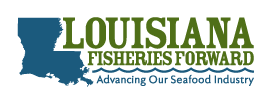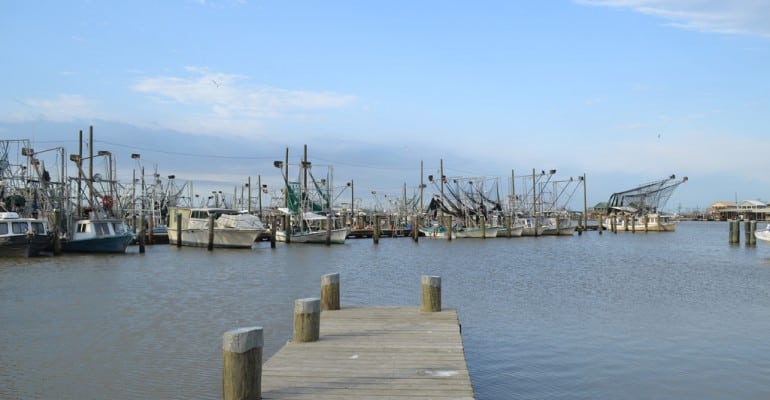The Gulf of Mexico Fishery Management Council met in New Orleans, Louisiana, January 30 – February 2, 2017, to discuss a number of fishery issues. The following is a summary of the Council’s actions:
Data Collection
The Council took final action on a Generic Amendment to modify the frequency and method of reporting for federally permitted charter vessels and headboats fishing for reef fish and coastal migratory pelagics in the Gulf of Mexico. After hearing public comment, the Council chose to require both charter vessels and headboats to declare fishing trips by hailing out and declaring the type of trip they will be taking. The Council also decided to require that vessel operators submit fishing records for each trip prior to offloading fish using NMFS approved hardware/software devices. The selected minimum requirement requires the GPS portion of the hardware be permanently affixed to the vessel and that the device, at a minimum, archives vessel position data. The amendment will be transmitted to the Secretary of Commerce for approval and implementation.
The Council also reviewed and took final action on the South Atlantic Council’s For-hire Reporting Amendment.
Mackerel
The Council considered taking final action on Coastal Migratory Pelagic Amendment 29, which considers allocation sharing strategies for Gulf King Mackerel that would conditionally transfer a portion of the uncaught king mackerel quota to the commercial sector and address recreational accountability measures. After hearing public comment, the Council chose to take no action on the allocation sharing action, and decided to postpone further action on the document indefinitely.
The Council will repopulate the Coastal Migratory Pelagic Advisory Panel at the April meeting. Applications for Advisory Panel members will be solicited in February.
Coral
The Council reviewed a scoping draft of Coral Amendment 7, which considers designating protections for deep-water coral areas in the Gulf of Mexico. Scoping meetings will be held across the Gulf coast in February and March in conjunction with public hearings on Shrimp Amendment 17B. Meeting dates and locations can be found here.
Shrimp
The Council reviewed a public hearing draft of Shrimp Amendment 17B. The Council selected preferred alternatives that would establish an aggregate maximum sustainable yield of 112 million pounds of tails and aggregate optimum yield of 85 million pounds of tails; set a minimum threshold number of shrimp permits at 1,072; form a review panel when the number of permits reaches 1,175; and allow vessels to transit through Gulf federal waters without a federal vessel permit if trawl doors and nets are out of the water and the bag straps are removed from the net. The Council will host public hearing meetings for Shrimp 17B in conjunction with Coral Amendment 7 scoping meetings. Meeting dates and locations can be found here.
Mutton Snapper and Gag
The Council reviewed a draft framework action that considers revising the mutton snapper annual catch limit, recreational bag limit, commercial and recreational minimum size limit, and increasing the gag commercial minimum size limit. The Council narrowed the range of alternatives and plans to review a final draft at the April Council meeting.
Gag Update Assessment
The Council heard the results of the most recent gag stock assessment. The Council’s Scientific and Statistical Committee determined that the assessment is the best available science and that the stock is not overfished or experiencing overfishing. The acceptable biological catch (ABC) projections for the years 2017-2019 remain above the current annual catch limit (ACL) of 3.12 million pounds gutted weight, and therefore no changes to the ACL will be made.
Charter and Headboat Management
After hearing a summary of the Joint Ad Hoc Red Snapper Charter Vessel and Ad Hoc Reef Fish Headboat Advisory Panels, the Council directed staff to begin the development of a white paper that explores including red snapper, gag, gray triggerfish, greater amberjack, and red grouper into a charter-for-hire management program consistent with the recommendations of the Advisory Panels. The Council also directed staff to craft a stand-alone action to address cyclical redistribution for shares of red snapper and include a suite of options for redistribution methods with timelines and a proposed appeals process.
Minimum Stock Size Threshold (MSST) for Reef Fish
The Council reviewed an amendment that considers standardizing the way Minimum Stock Size Threshold is defined for species in the reef fish management unit. Minimum Stock Size Threshold is used to determine whether a stock is considered overfished, and currently the Council has only defined MSST for six of 31 reef fish stocks. The Council plans to host a public hearing webinar to gather public input before the April Council meeting and take final action in June.
Commercial Individual Fishing Quota (IFQ) Program Modifications
The Council discussed a public hearing draft of Amendment 36A, which considers making modifications to the commercial IFQ program including hail-in requirements, inactivated shareholder accounts, mid- year quota changes, and dealer offload notification requirements. The Council will send a direct mailing to commercial permit holders and shareholders, and host a webinar to solicit public comments before the April meeting.
The Council heard a presentation on draft Amendment 36B which considers program eligibility requirements, allocation caps, restrictions on shares and allocation transfers, lease to own provisions, and quota redistribution/set aside. The Council will review a draft options paper at a future Council meeting.
Gulf Anglers Focus Group
The Council heard a presentation from an independent group of stakeholders in the recreational red snapper fishery, which developed several options to consider for improving management of recreational red snapper fishing. The Ad Hoc Private Recreational Red Snapper Advisory Panel will meet in the upcoming months to review the findings of the focus group and develop recommendations for the Council.
Gray Triggerfish
The Council reviewed a public hearing draft of Amendment 46 – Gray Triggerfish Rebuilding plan, which considers revising the rebuilding timeline, annual catch limits and targets along with recreational fixed closed seasons, bag limits, and minimum size limits; as well as the commercial trip limit. In addition to the previously selected preferred alternatives, the Council chose a preferred alternative that would increase the commercial trip limit from 12 to 16 fish since the commercial sector is not currently landing its quota. The Council will host public hearings to gather input on this document before the April meeting. Public hearing dates and locations can be found here.
Greater Amberjack Recreational Season
NOAA Fisheries alerted the Council that due to a recreational harvest overage in 2016 and consequential pay back provision, the 2017 recreational greater amberjack season is expected to be short. A stock assessment is expected to be completed before the April Council meeting. The Council is expected to initiate a framework action to align the greater amberjack annual catch limits with the newly completed stock assessment as soon as possible.
Spiny Lobster
The Council reviewed the options paper for joint Spiny Lobster Regulatory Amendment 4 which considers revising management benchmarks including; Maximum Sustainable Yield, Overfishing Threshold, Overfished Threshold, Annual Catch Limit and Annual Catch Target for Caribbean Spiny Lobster. The Council selected preferred alternatives that would set the MSY proxy and MFMT equal to the revised OFL using the mean landings from the years 1991/1992- 2015/2016 plus two standard deviations, and set the ACL is equal to the ABC using the mean landings from the years 1991/92-2015/16 plus 1.5 standard deviations (9,600,000 pounds) with an ACT set at 90% of that (8,640,000 pounds).
Yellowtail Snapper
The Council initiated work on an amendment that considers specifying a single acceptable biological catch and annual catch limit for yellowtail snapper in the Gulf of Mexico and South Atlantic.
Questions?
The Council will host a Post Council Wrap-Up Webinar to review the Council meeting. Join us at 6:00 p.m. EST Wednesday, February 8, for a quick presentation followed by a question and answer session. Register for the webinar here.
More Information
For more information about any of the amendments discussed during the Council meeting, visit http://gulfcouncil.org/fishery_management_plans/scoping-thru-implementation.php and scroll down to the amendment of interest to find the draft document, video, guide, and other information.
About the Gulf of Mexico Fishery Management Council
The Gulf of Mexico Fishery Management Council is one of eight regional Fishery Management Councils established by the Fishery Conservation and Management Act of 1976. The Council prepares fishery management plans which are designed to manage fishery resources within the 200-mile limit of the Gulf of Mexico.
Submit comments and stay updated on fishery issues:
Check it out! Go to www.gulfcouncil.org and click on the thermometer in the middle of the page. From there you can read up on all the pending actions, watch the video presentations, read comments, and submit comments. All comments submitted through the online form are automatically posted on our web site for Council review. Other comments are manually posted every couple of days.
There is also a thermometer for each issue that lets you know where the Council is in the process for that particular amendment, whether it’s the scoping phase, final action, or implementation.





